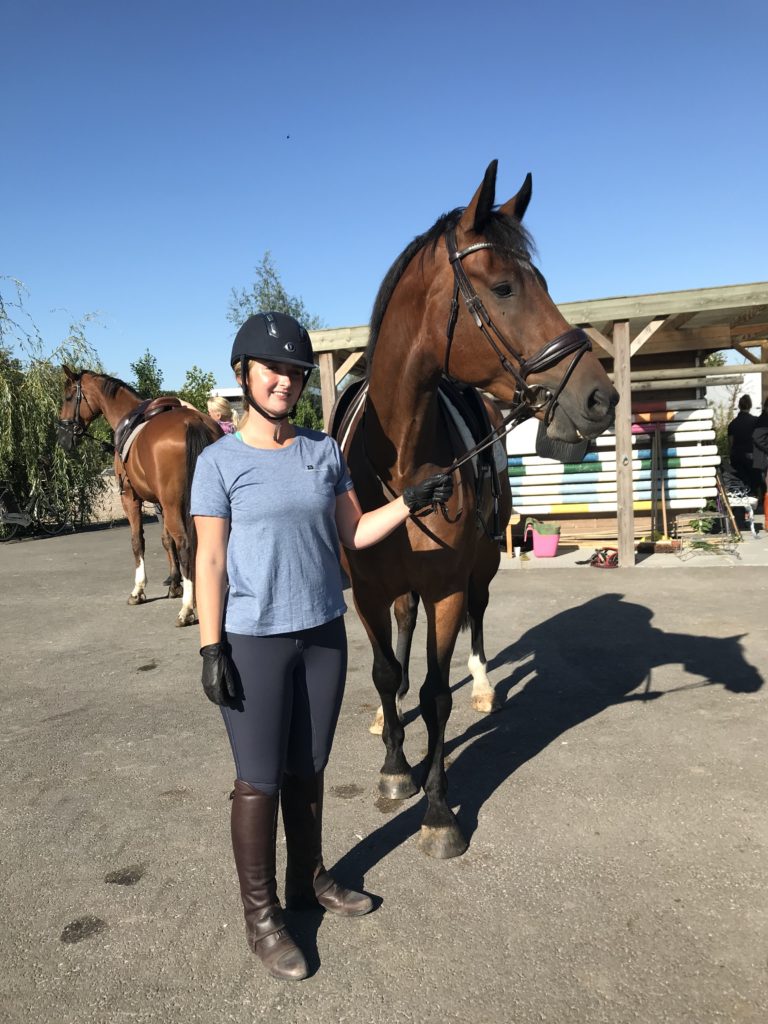TRAINING YOUR HORSE IN BALANCE BY YASMIN STUART
I get asked this a lot. “What’s the point? Why should I bother to train my horse to move in balance?”
Horses are prey animals. Their comfort levels are extremely important to them – they feel vulnerable when they are suffering any kind of discomfort. And this discomfort can make them extra spooky – why? Because lack of comfort comes with inherent risk- it’s in this state where they are more susceptible to predatory attack.
HOW DOES THIS RELATE TO BALANCE?
Lack of balance, or rather, imbalance is uncomfortable, and long-term imbalance can lead to injury. When I think about imbalance, I think about asymmetry. And what happens when our horses are trained with asymmetry and imbalance?
Most commonly, people think imbalance is about their horse being on the forehand. This is where they are carrying more weight on their forelimbs and pulling themselves along. But of course, with a great big head and neck on their front end, they’re going to be carrying more weight in front. This is totally normal. Right? Well yes, until we complicate things by adding a rider- an extra 15% (at least!) of their body weight added closer to their forelimbs than their hindlimbs- and then complicating things more by expecting these fairly economical beings, who are designed to spend vast proportions of their day grazing and browsing, doing unnatural things like leg yield, half pass, piaffe, passage and jumping.
However, it’s naive to think that all that matters is horizontal balance – because your horse can be symmetrical and on the forehand. A big issue arises when they’re not carrying weight equally on either side of their body.
To quote Sharon May-Davies; “Logic dictates that… asymmetric form comes with asymmetric force”.
So, asymmetry isn’t just about a horse being statically crooked. When you add locomotion to this crookedness you expose their limbs to even greater unequal forces which in turn will begin to adapt. Eventually manifesting as pathology such as high/low syndrome, tendinopathy and arthritis.
Research has proven that racehorses have as little as 100,000 loading cycles (ie times their limbs strike the ground at a gallop) before their tissues begin to suffer degradation. Research has also proven that you can decrease the inertia experienced by each limb if you can increase the length of time the limb spends on the ground – therefore spreading out the force loading through the limb over a longer period of time.
WHAT DOES THIS MEAN TO A HORSE SUFFERING FROM IMBALANCE?
Well one side of their body will be moving very differently to the other – effectively working on different time zones to each other. Meaning either side of their body will be exposed to different loading patterns, different inertias and therefore different biological forces. The equid body is very clever – it can adapt to these forces in order to try to stay sound – referring back to staying alive in the wild. The tissues begin to change – sometimes beyond repair and recovery – resulting in greater imbalance, discomfort and eventually lameness.
If we can train our horses to move in balance, we are effectively setting them up for a life of comfort and longevity. When a horse is in balance, not only are they moving symmetrically but they are also taking longer steps, with greater cadence. Bringing this full circle around to the concept of cyclical loading – if they are taking bigger steps and spreading the forces experienced through each limb over a greater period of time, they are taking fewer steps with less force. This can only have a positive impact on their soundness and therefore their wellbeing.
I’m not saying we want to stop our horses from moving; I’m saying that we want to make sure every step they take in our presence counts.
IF YOU ARE INTERESTED IN THIS TOPIC, YOU MIGHT LIKE THIS ONLINE COURSE:
Compassionate Training for Today’s Sport Horse – learn more here







